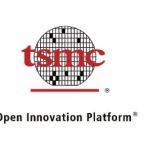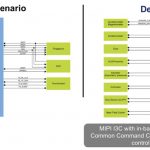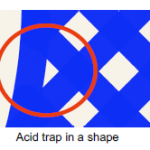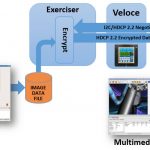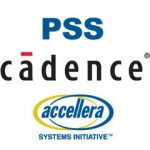Most people think that designing successful high speed analog circuits requires a mixture of magic, skill and lots of hard work. While this might be true, in reality it also requires a large dose of collaboration among each of the members of the design, tool and fabrication panoply. This point was recently made abundantly clear at the TSMC Open Innovation Platform (OIP) Forum held in Santa Clara on September 13th. Indeed, the entire OIP ecosystem was established by TSMC to encourage this kind of collaboration. Over the years it has enabled significant advances in electronic product design and delivery.
Continue reading “TSMC Teamwork Translates to Technical Triumph”
eFabless and Silego $15,000 Go Configure Design Challenge Series!
The eFabless and Silego “Go Configure Design Challenge Series” is the first of its kind to allow a global community of designers to implement widely used functions using GreenPAK™ Configurable Mixed-signal ICs (“CMICs”) and its intuitive drag-and-drop software GUI. The efabless platform will serve as the crowd source design platform on which the CMIC hardware designs will be submitted. This design challenge is intended to be the first step in establishing a future marketplace for innovators and their designs.
For more information here is a CEO interview with John Teegen of Silego Technology and Mike Wishart of efabless. John and Mike discuss community design of Silego Configurable ICs and the Go-Configure Design Challenge.
Hi John and Mike. John, tell our readers a bit about Silego.
JT: Dan, we may be one of the more impactful under-the radar companies that you will ever see. In fact, Semico called Silego the “best kept secret in Silicon Valley”. We pioneered and are the market leader in Configurable Mixed-signal ICs, or CMICs, and we have shipped over 3 billion devices since their introduction. You can think of CMICs as bringing the convenience of FPGA’s to mixed-signal. Each device contains analog components, discrete digital logic, and power components that can be integrated through software into highly configurable, small, easy to use, low cost ICs. Customers get faster time to market, reduced system parts count, lower power consumption, less board space and reduced BOM costs.
Six generations of CMICs have been introduced, with increasing functionality and design tool enhancements. The design process of a CMIC is now extremely intuitive and very comparable to designing circuits on PCBs. With minimal training, a wide variety of designers can now design their own CMIC with no NRE or production commitment.
That is why we are excited about the Go Configure Design Challenge Series and partnership with efabless. This was the brainchild of Mike Noonen, Silego’s Vice President of Sales and Business Development, in collaboration with Mike Wishart and Mohamed Kassem, co-founder of efabless. The objective is to educate and enable an engaged community on the efabless platform that can respond to design requests from customers of all sizes and open the IoT market to the power of Silego mixed-signal-on-demand. We see it as a key step in growing our business and introducing a better way to design to thousands of designers worldwide.
Mike, bring us current on efabless.
MW: As you recall, efabless.com is the world’s first community engineering platform for electronics solutions. We connect a global community of mixed-signal designers with customers and enable them with processes and a unique community-centric marketplace to develop, share and commercialize products. We introduced our solution for community created IP with a design challenge for X-FAB, our foundry partner, last November. We released our community created IC platform in June. With Silego we now offer community development of programs, we call “soft designs”, for configurable IC parts. The Challenge Series is the first step in our support of Silego and configurable ICs. We will also provide the marketplace to connect designers with opportunities and to showcase their designs.
How doesthe Silego partnership fit into your model?
MW: We are very excited about our relationship with Silego. This is a strong validation of the principle of community design and the Go Configure Design Challenge is a first of its kind for the sector. Remember, we founded efabless on the principle that a connected and a collaborative community of highly skilled innovators is a catalyst for IoT and smart hardware to reach its fullest potential. IoT and smart hardware products are often created by companies that do not have the internal core expertise in electronics development or expertise in a very specific area of hardware design. An example would be a shoe company making a Bluetooth connected running sneaker. This new class of innovators needs a broad community with the time and resources to turn an idea into a product. And, in particular, they need analog and mixed-signal to connect the digital “smarts” of their products with the physical world. That’s where Silego-on-efabless comes in.
JT: The Silego GreenPAKs are a terrific solution for community design. They are easy to learn and easy to use. With our devices, the efabless community can offer Configurable Mixed-signal IC solutions with incredibly fast time to market for a wide range of applications.
MW: Silego also greatly expands the community of designers beyond the universe of analog and mixed-signal IC designers to PCB and other system level engineers.
Tell us about the Go Configure Design Challenge
JT: The Go Configure Challenge is obviously a play on words – effectively who would have thought that designers from around the world could learn our platform, create designs and get global recognition for doing so. Oh, yes, and win prizes. In the Challenge Series, we will be tasking the community with designing various industry standard functions and the designs will be judged by Silego on the quality of the design and the documentation. We have chosen 10 separate industry standard functions at three levels of complexity: easy, moderate and difficult.
We will present the Go Configure Design Challenge Series on efabless in five pairs of two challenges each, beginning on October 2[SUP]nd[/SUP] and continuing until mid-December. Each Challenge will be open for two weeks. We will offer prizes like smartwatches and Bluetooth speakers for the highest quality designs for each separate challenge. Each separate challenge will also pay out Time-To-Market cash awards for the first three entries that meet a high, commercially acceptable, standard of quality – we recognize that successful community design requires both speed and quality. Finally, we will keep a running tabulation of scores across all challenges and present a grand prize to the overall challenge winner.
How do people register and compete?
MW: It all works very easily. Designers come to efabless and check out the “Go Configure Design Challenge Series” page. This will provide access to all the details on the Challenge Series as well as links to information on each separate challenge in the series. To participate, the designer registers on efabless and then reviews and selects a challenge or challenges. We also provide access to training videos authored by Silego engineers. We think participants will be pleased to see how easy it is to learn the GreenPAK development environment and become effective.
What happens after the Challenge? How can this new-found design talent be utilized?
MW: We are very excited about making Silego GreenPAKs available to our community as a key capability on the efabless platform. Community members will be able to create personal profiles that include their GreenPAK accomplishments and are searchable by customers and other community members. Potential customers will be able to search for GreenPAK talent or request designs. Community members will also be able to create their own unique designs and present them in a very protected way, with application notes and data sheets, in our marketplace.
We look forward to seeing community innovation on Silego GreenPAKs and encourage your readers to sign up and get started with the Go Configure Challenge.
Deal Struck for Sale of Toshiba NAND to Bain Apple and Others
What does it mean for the skyrocketing memory sector? In a last minute plot twist, Bain capital appears to be the winner in the auction of the Toshiba memory unit. The Bain consortium includes a strange cast of characters including Apple, Dell, Seagate, Kingston Technology, Innovation Network Corp of Japan and Development Bank of Japan.
Continue reading “Deal Struck for Sale of Toshiba NAND to Bain Apple and Others”
2017 Semiconductor Growth Approaching 20 Percent!
The 2017 semiconductor market is shaping up as the strongest since 2010 – when the market grew 32% as it bounced back from the 2008-2009 downturn. According to World Semiconductor Trades Statistics (WSTS), the second quarter 2017 semiconductor market was up 5.8% from 1Q 2017 and up 23.7% from a year ago. Much of the market vitality is due to memory – specifically DRAM and NAND flash. This is illustrated by quarter-to-quarter revenue change of the major memory companies. Samsung revenues (in Korean won) were up 12.3% in 2Q17 versus 1Q17. Micron Technology revenues were up 19.8%. SK Hynix revenues (in Korean won) were up 6.4% in 2Q17, following 17.4% growth in 1Q17. Company guidance for 3Q17 shows continued strength in memory. Micron guided for 6.0% growth in 3Q17, with high-end guidance of 9.9%. Samsung and SK Hynix did not provide 3Q17 guidance, but both companies expect continued strong demand for DRAM and NAND flash. Micron expects healthy memory demand to continue into 2018.
A good sign of the health of the overall semiconductor market is the 3Q17 outlook for non-memory companies. Most of the major non-memory companies expect 3Q17 revenue to increase in the range of 5.6% to 9.0%. The exception is Infineon, which guided for 3Q17 revenue to be about the same as 2Q17. The high end of guidance from the non-memory companies shows the potential for close to double-digit growth. Excluding Infineon, the high end guidance ranges from 9.1% from Broadcom to 15.4% from Qualcomm.
Recent forecasts for the semiconductor market reflect this strength. WSTS’s June projection was 11.5% growth in 2017. In August, WSTS revised its forecast based on final 2Q 2017 data to 17.0%. Other recent forecasts range from 16% (for the IC market) from IC Insights to our Semiconductor Intelligence updated projection of 18.5%.
The available forecasts for 2018 generally call for a significant slowdown in the semiconductor market. WSTS expects 4.3% change and Mike Cowan’s latest projection is for 3.2% change. Our updated outlook at Semiconductor Intelligence is 10.0% growth in 2018. Our higher number is based on several key assumptions:
1. No crash in the memory market. The current boom in the DRAM and NAND flash markets is largely driven by increasing prices. This is not sustainable. Eventually supply and demand will move toward a balance – through an increase in supply as more capacity is added; through a decrease in demand as end equipment markets slow; or through a combination of the two. The memory market has seen major downturns in the past when demand from end equipment makers has declined significantly. As demand fell off, memory companies cut prices in an effort to keep fabs running. We do not expect any falloff in demand in 2018. The DRAM and NAND flash markets should experience a moderate correction, but not a significant decline.
2. Strong quarterly pattern set in 2017. The semiconductor market grew 5.8% in 2Q17 and should experience similar or stronger growth in 3Q17. Thus even moderate quarter-to-quarter growth in 2018 can lead to an annual increase close to double digits.
3. Continued electronic equipment growth. The major drivers of semiconductor demand have been PCs, tablets and mobile phones. Although these markets have been sluggish in the last few years, Gartner expects 2018 to improve over 2017. Automotive is becoming a significant market for semiconductors. Gartner projects growth in this market will pick up from 6% in 2017 to 7% in 2018. Semiconductors for Internet of Things (IoT) applications is an emerging market. IC Insights forecasts healthy IoT SC growth of 16% in 2017 and 15% in 2018. The global economy should see a slight pickup from 3.5% growth in 2017 to 3.6% in 2018, according to the International Monetary Fund (IMF).
[table] border=”1″ align=”center”
|-
| style=”width: 162px; height: 17px” | Annual Change
| style=”width: 102px; height: 17px” | 2017
| style=”width: 108px; height: 17px” | 2018
| style=”width: 207px; height: 17px” | Source
|-
| style=”width: 162px; height: 17px” | PC & tablet units
| style=”width: 102px; height: 17px” | -3.4%
| style=”width: 108px; height: 17px” | 0.7%
| style=”width: 207px; height: 17px” | Gartner, July 2017
|-
| style=”width: 162px; height: 17px” | Mobile phone units
| style=”width: 102px; height: 17px” | 0.6%
| style=”width: 108px; height: 17px” | 1.7%
| style=”width: 207px; height: 17px” | Gartner, July 2017
|-
| style=”width: 162px; height: 17px” | Automotive SC $
| style=”width: 102px; height: 17px” | 6%
| style=”width: 108px; height: 17px” | 7%
| style=”width: 207px; height: 17px” | Gartner, Feb. 2017
|-
| style=”width: 162px; height: 17px” | Internet of Things SC$
| style=”width: 102px; height: 17px” | 16%
| style=”width: 108px; height: 17px” | 15%
| style=”width: 207px; height: 17px” | IC Insights, June 2017
|-
| style=”width: 162px; height: 17px” | Global GDP
| style=”width: 102px; height: 17px” | 3.5%
| style=”width: 108px; height: 17px” | 3.6%
| style=”width: 207px; height: 17px” | IMF, July 2017
|-
GLOBALFOUNDRIES is Hitting on all Cylinders
On September 20th GLOBALFOUNDRIES (GF) held their annual technology conference. The conference presented an opportunity to hear the latest on the fascinating journey GF has been on.
Continue reading “GLOBALFOUNDRIES is Hitting on all Cylinders”
What’s New with the I3C Standard
This month we’ve seen both Apple and Samsung announce their newest, flagship smart phones, and they each have an incredible number of sensors and components included like: Continue reading “What’s New with the I3C Standard”
Design for Manufacturability Analysis for PCB’s
Chip designers are familiar with the additional physical design checking requirements that were incorporated into flows at advanced process nodes. With the introduction of optical correction and inverse lithography technology applied during mask data generation, and with the extension of a 193nm exposure source to finer resolution dimensions, the traditional design rule checking (DRC) step was augmented with EDA tools that analyzed layout data to assess the fidelity of the final wafer-level structures to the original design. These algorithms were incorporated into checking tools described as providing Design for Manufacturability (DFM) support. (Parenthetically, EDA tools have also been developed to actively modify layout design data to reduce the “critical areas” that could contribute to yield loss, known as Design for Yield (DFY) modifications.)
DFM analysis has become increasingly important in the printed circuit board (PCB) design domain, as well. The scope of DFM analysis is significantly different for PCB design than chip design — PCB manufacture involves both bare board fabrication/test and subsequent component assembly. As a result, the DFM analysis for PCB design is an intricate interaction between Design for Fabrication (DFF) and Design for Assembly (DFA) requirements.
Examples of DFM checks for PCB design are illustrated below. The first depicts an “acid etch trap”, an area that may retain etchant longer than intended, resulting in open connections. The second figure highlights a design “sliver”, which is susceptible to detaching during the overall assembly flow, with the possibility of re-depositing and shorting distinct connections. Other examples include a trace routed through a solder mask opening created for a test point, or an analysis of the board stack-up thickness to via size aspect ratio to evaluate the drilling requirements and costs. These layout topologies are DRC clean, but represent additional risks during volume PCB manufacturing.
I recently had the opportunity to chat with Hemant Shah, Product Management Group Director for the Allegro PCB products at Cadence, about the expanding role of DFM for PCB design. Hemant impressed upon me the unique nature of this checking flow, as compared to IC design:
- PCB project development schedules are extremely aggressive
As a result, DFM analysis for PCB design needs to be an integral part of the design environment, with interactive results available for review.
- DFM analysis for PCBs requires access to the full board stack-up, layout, and component database.
Traditionally, multiple file formats have been used to represent the fabrication and assembly release data — e.g., Gerber drawings, CNC drill instructions, test specifications. The suite of DFM checks requires visibility into all PCB data, again necessitating integration with the design platform. (Hemant noted that the emerging IPC 2581 standard will be the comprehensive PCB release-to-manufacturing format for final analysis — please refer to www.IPC2581.com for more info.)
- PCB assembly introduces unique DFM analysis checks, beyond the IC realm.
The PCB Bill of Materials (BoM) is represented by a component library database, reflecting the schematic symbol, pad footprint, logical-to-physical correspondence, and 3D dimensional models. This library data is fundamental to DFA checking. For example, the automated optical inspection (AOI) head requires unobstructed visibility for (post-reflow) analysis of component placement/attach and detection of solder quality defects.
Hemant indicated that Cadence has addressed DFM analysis for PCBs with a new technology – the DesignTrue DFM – that is integrated into the Allegro Printed Circuit Design platform to provide real-time in-design DFM checks as the design is created.
“PCB layout designers routinely apply interactive DRC checking within Allegro. We have expanded that capability with DesignTrue DFM analysis, which incorporates over 2000 manufacturing rules. Layout designers can quickly get DFM results directly in Allegro, and evaluate them in the DRC Viewer.”, Hemant said.
Unlike the pass/fail nature of DRC rules, viewer support for DFM rules requires additional features. In addition to simply fixing DFM rule violations, layout designers can flag DFM results, assign a severity, and generate reports for broader review by the engineering team.
“How are these DFM rules developed, as part of design enablement?”, I asked.
Hemant replied, “The enablement team uses the familiar Allegro Constraints Manager interface to manage DFM rules. The rule values are commonly a combination of data from the PCB fabrication/OSAT and a customer-defined ruleset. Customers seeking multiple sourcing options may wish to establish their own encompassing rules. There is also the capability to define additional rules, beyond the 2000+ currently built into DesignTrue DFM.”
“Are DFM rules computationally expensive, especially for interactive checking?”, I inquired.
“There are seven different rule categories in DesignTrue DFM.”, Hemant indicated. Examples include: surface versus inner layer rules, rigid versus flex rules, stack-up and drill specifications, trace + via + soldermask + silkscreen rules,.
Hemant continued, “Layout designers can optimize their performance throughput by selecting specific checking tasks and/or restricting the analysis to specific regions.”
Design for Manufacturability analysis is no longer strictly part of the release handoff to the PCB fabricator, but has become a critical step in the PCB design phase. The interactive DRC checks in the PCB platform are expanding to include DFM checks, as well. The Cadence Allegro PCB DesignTrue DFM technology feature is indicative of this PCB design methodology trend — for more information on DesignTrue DFM, please follow this link.
-chipguy
Emulation Methodology for Drones and Other Video-Intensive Multimedia SoCs
What do drones, augmented reality devices, and 4K UHD TV have in common? They all include complex system-on-chips (SoCs) that must encode and decode, in real-time, data for increasingly higher definition video content. Verifying that these SoC designs are functionally correct is quite complex, but they must also function efficiently in the context of the entire system, so verifying the hardware and software too is essential. An emulation-based methodology is by far the most effective and efficient way to successfully accomplish these tasks.
Let’s take a look at the verification requirements and various verification methods design teams employ for verifying video-intensive multimedia SoCs. We’ll then examine how an emulation methodology was effectively applied to verify an SoC in one of the fastest-growing segments in the multimedia market: drones.
Challenges of Verifying Multimedia SoCs
It is not a trivial task to verify the video capture circuitry, data collection components, and streaming video essential to multimedia devices. As well, debugging is not straightforward for any type of multimedia SoC. There is a vast amount of data generated; and while video artifacts and audio glitches may be easily detectable by human eyes and ears, they are harder to spot in a waveform or database.
A few companies offer simulation acceleration IP, but this IP provides little help when verifying an SoC design with embedded software running on the full hardware design. Outside of emulation, there has not been any other way to do system-level verification of the software of a UHD-4K SoC, for example, without resorting to implementing the SoC on an FPGA prototyping system. However, FPGA prototyping is only useful if the hardware design is stable and relatively bug free. So, if the hardware is still a moving target, then the software team cannot get started until it is completed.
Although there is verification IP for UHD-4K, it is very difficult to create a simulation testbench representing the UHD-4K stimulus to put through the design. Also, with simulation-based approaches, there is an absence of efficient, built-in, system-level applications for displaying and analyzing the UHD-4K output. As well, UHD-4K verification methods that depend on simulation testbenches typically do not use real-world stimulus files.
Emulating a Multimedia Device
To effectively perform verification for a multimedia SoC, there must be a virtual audio-visual device to generate or receive/display UHD-4K streams to and from the design under test (along with HDCP 2.2 encrypt/decrypt). This allows teams to verify and debug the SoC pre-silicon in a software-based environment, providing both user flexibility and a high level of performance.
UHD-4K verification solutions for use with hardware emulation meet these needs (Figure 1). With the UHD-4K protocol running as a software model on an emulator, engineers can use system-level applications to drive the verification and debug process from a PC or workstation. Now, instead of having to painstakingly build a testbench to create a UHD-4K stimulus, users can simply grab an ordinary video file, even a pre-existing AVI (or WAV, TIFF, or BMP) file off the internet, and auto-convert it into a UHD-4K stream.
Auto-generating a protocol-compliant UHD-4K stream saves time and risk since it eliminates the need to validate conversion compliance. The UHD-4K stream content is user-controllable by selecting a preferred pixel format or other parameters, and the UHD-4K output is compliant. Setting up the stimulus can be done in a wizard or command line, including scripting multiple stimuli.
Having auto-converted the video file into UHD-4K, the UHD-4K protocol software plays the resultant stream into the DUT running on the emulator. The emulator then extracts and displays the audio-video output from the DUT and supports pixel-level graphical debugging of that displayed content; tracing particular streams or frames in detail, with video and audio.
An AVI can be exported from the DUT output to verify that it plays as expected in a real-world user application; such as Windows® Media Player. This allows the human eye to pick up errors in AV content far more efficiently than stepping manually through waveforms. Users can still zoom-in to the image to see pixel data and also examine audio detail or export the data for step-by-step waveform debugging if needed.
To facilitate debug, a programming interface can be used to export the display stream database and validate pixel data by comparing the actual against the expected outcome. If a problem is found, the log data can be output, showing content and time, so engineers can trace back on the emulator to identify what else was occurring at the moment of an error that might have caused the problem.
Debug can be a live process, capturing DUT output directly into a display and debugging on-the-fly to analyze and fix a problem immediately, or it can be captured into a database for subsequent debug. In batch mode, automated regression testing can be performed and may also be scripted for increased efficiency and productivity.
Let’s take a look at the rapidly growing drone market and how the right emulation methodology helps teams quickly bring drone innovations to market.
Invasion of the Drones
The drone market has a mega-appetite for electronics and is one of the fastest growing multimedia market segments. A recent report from BI Intelligence estimates that the investment in drone powered solutions will reach over $12bn by 2021 (Figure 3).
With drones being applied to military, agriculture, search and rescue, broadcast and leisurely use, the drone market is getting ever more competitive. To stay ahead of the curve, drone companies are integrating high-definition video and other features into their SoCs. They are also increasingly turning to emulation for not only verifying the SoCs function properly but also for early software validation. Here are the top four reasons why they are turning to emulation methods:
[LIST=1]
Case Study: SoC Solutions for Drone Application
A Veloce customer in China creates SoC solutions for drone applications. They decided to purchase a Veloce emulation system in 2017 for the verification of their complex video chips. They did not have just one design to run on emulation, they had five unique multimedia designs that needed verification. The design sizes ranged from 15MG to 25 MG, and emulation performance was the critical factor in their decision to purchase Veloce. Multiple video protocol standards were used: HDMI, eDP and MIPI CSI-2. By using Veloce, this customer found multiple bugs in both their DUT (RTL) and firmware that would have been very difficult to find without an accelerated verification environment.
Conclusion
With all these new standards coming out and new multimedia capabilities, even more companies are going to need emulation to churn through the masses of data. The Veloce VirtuaLAB Multimedia application reduces the risk for UHD-4K and HDMI developers by allowing them to use a virtual environment to eliminate the fault errors that could occur in a final product at the pre-silicon stage. Virtualization increases verification productivity by making emulator resources available 24/7 from anywhere in the world and by significantly reducing the time to set up and run new projects.
To learn more about the challenges of the multimedia market, and how an emulation-based verification methodology offers design teams a significant advantage—please download the whitepaperDrones, Augmented Reality, UHD TV – High-End Video SoCs Need Emulation.
High-Speed Equivalence Checking
Following on product introductions for simulation and prototyping, physical verification and implementation earlier in the year, Anirudh Devgan (Exec VP and GM at Cadence), the king of speed and parallelism has done it again, this time with logic equivalence checking (LEC). Cadence recently announced an advance to their well-known conformal LEC with a new Smart LEC.
First, some background on LEC for those who started design relatively recently. Back in the mists of time when logic synthesis was becoming popular, a question asked by many design team was how they could trust that synthesis didn’t make mistakes in translating from RTL to gate-level design. Back then one answer was to repeat RTL verification regressions at the gate level. But of course that was very slow and might still miss bugs that weren’t exposed in those regression suites. Today some amount of gate-level testing is making a comeback for other reasons but would be laughably ineffective for comprehensive RTL to gate equivalence checking.
Back in 2003 Cadence acquired a private company called Verplex who had built a tool to answer this problem (then called Conformal LEC, now Conformal EC), approaching the problem of checking equivalence between RTL and synthesized gate-level netlist in a different way, through formal verification. A formal equivalence check promised complete verification of logic equivalence, unlike simulation and could complete proving in relatively modest time, again unlike simulation. It took a little work to setup but quickly became popular and a de-facto part of the implementation flow where it was also used at ties to verify the logical correctness of implementation ECOs.
Synopsys had similar technology in Formality, but users raised a common concern – if I want to check the output of a tool from company X, do I really want to use a tool also from that same company or would I rather use a tool from a competing company? Fair or not, this thinking was widespread, contributing to Conformal leadership in this domain and arguably the first real commercial success for formal technology in production design flows.
As the technology became more embedded and more proven in flows, designers felt more comfortable using more aggressive synthesis options where before it would have been very challenging to validate the equivalence of before and after synthesis behavior in any comprehensive way.
Of course it wasn’t all plain sailing for formal-based proofs either. This was especially true around datapath components and optimizations. Validating multipliers, carry-save transformations and even more tricky blended operations (multiply-accumulate for example) can’t just be thrown at standard LEC algorithms. These required specialized approaches, and specialized user-directed scripting where needed.
All such problems were conquered one way or another, but over time the setup recipes and thus scripting to run LEC became more complex and required more expert guidance both within companies and from tool providers. A natural progression perhaps, but as designs get bigger, there was a natural desire to be able to parallelize verification, yet making that truly streamlined was hampered by all these complex user-defined recipes with multiple proof strategies.
Enter Conformal Smart LEC. This will now automatically partition a design with what Cadence calls adaptive proof technology which will assign appropriate proof strategies to different parts of the design, then launch those partitions across multiple machines/CPUs for parallel proving. The platform still supports scripting but notably, according to Kam Kittrell (Product management group director, Digital & Signoff Group at Cadence), Smart LEC has been able to run large designs with the default script rather than previous complex scripts (making setup much easier). And even using that default script it has been able to complete proofs 4X faster than the previous approach on a cited customer example. Cadence asserts that the tool can transparently scale up to run on 100s of CPUs (no script changes required) and that 20X+ improvements in runtime are possible.
You can learn more about Conformal Smart LEC HERE.
Portable Stimulus Standard, What’s New from Cadence
I’ve been hearing about the Portable Stimulus Standard (PSS) since DAC 2016, so it’s helpful to get an update from EDA vendors on what their involvement level is with this emerging standard and how they see it helping design and verification engineers. Earlier in September I scheduled a conference call with Cadence and spoke with Sharon Rosenberg about the state of PSS at Cadence. What follows is my Q&A session.
Continue reading “Portable Stimulus Standard, What’s New from Cadence”


